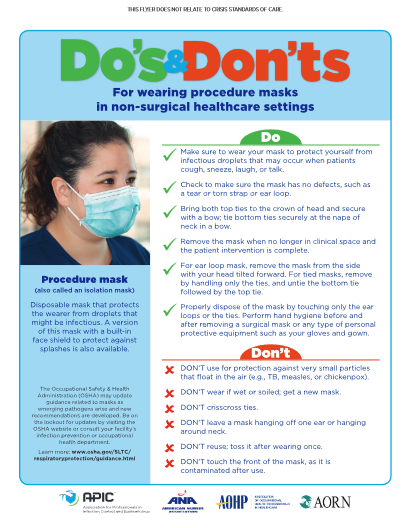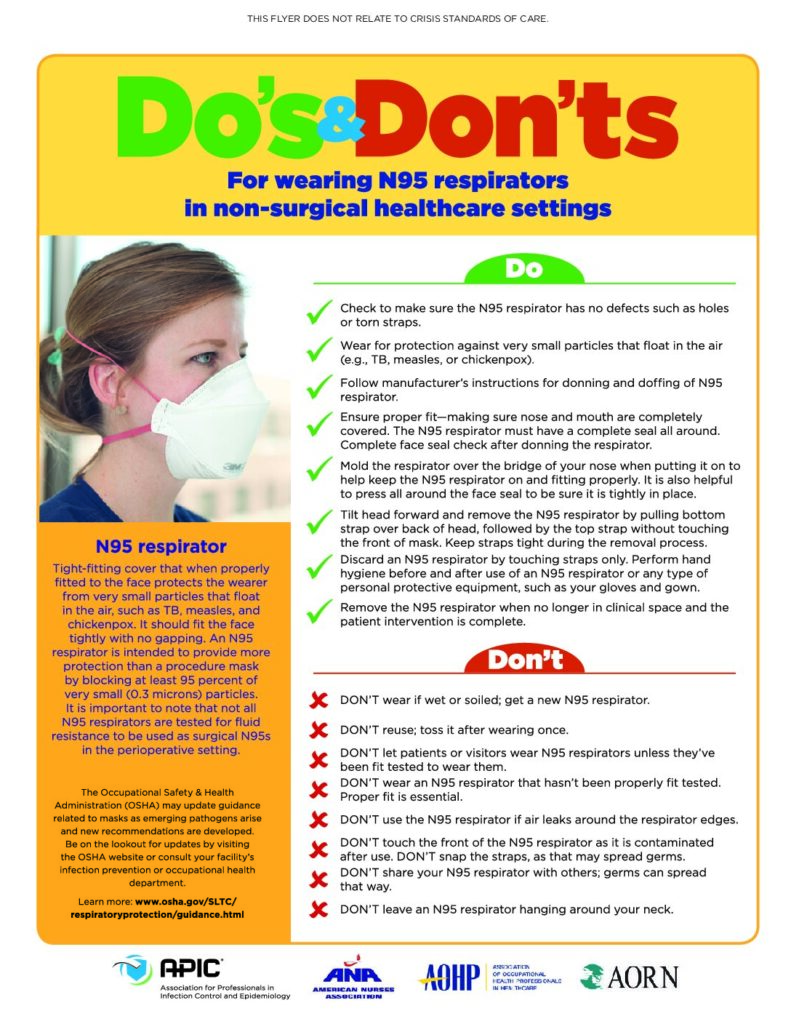PPE Do’s and Don’ts
To help educate healthcare professionals on how to properly wear personal protective equipment (PPE), APIC has created the following flyers that outline key points on how to use PPE in non-surgical settings. We encourage you to download and print these free flyers and share them with your healthcare facilities. NOTE: THESE FLIERS DO NOT RELATE TO CRISIS STANDARDS OF CARE.

Gowns Gowns are classified by their ability to withstand penetration by blood or body fluids. Gowns used in the healthcare settings are defined and classified by the Association for the Advancement of Medical Instrumentation. Download this infographic
Download this infographic in Spanish
Download this inforgraphic in Arabic

Gloves There are many types of gloves used in healthcare settings. Some types include sterile, non-sterile, non-medical, and utility gloves. Learn the proper ways and uses for this type of personal protective equipment. Download this infographic.
Download this inforgraphic in Spanish
Download this infographic in Arabic

Procedure Masks A procedure mask (also called an isolation mask) is a disposable mask that protects the wearer from droplets that might be infectious. A version of this mask with a built-in face shield to protect against splashes is also available. Download this infographic
Download this infographic in Spanish
Download this infographic in Arabic.

N95 Respirators An N95 respirator is a tight-fitting cover that when properly fitted to the face protects the wearer from very small particles that float in the air. An N95 respirator is intended to provide more protection than a procedure mask. Download this infographic Download this infographic in Spanish Download this infographic in Arabic
Please see: National Institute for Occupational Safety and Health (NIOSH) Guidance on Recommended Guidance for Extended Use and Limited Reuse of N95 Filtering Facepiece Respirators in Healthcare Settings
We thank APIC’s Communications Committee for helping to develop these special infographic posters.
